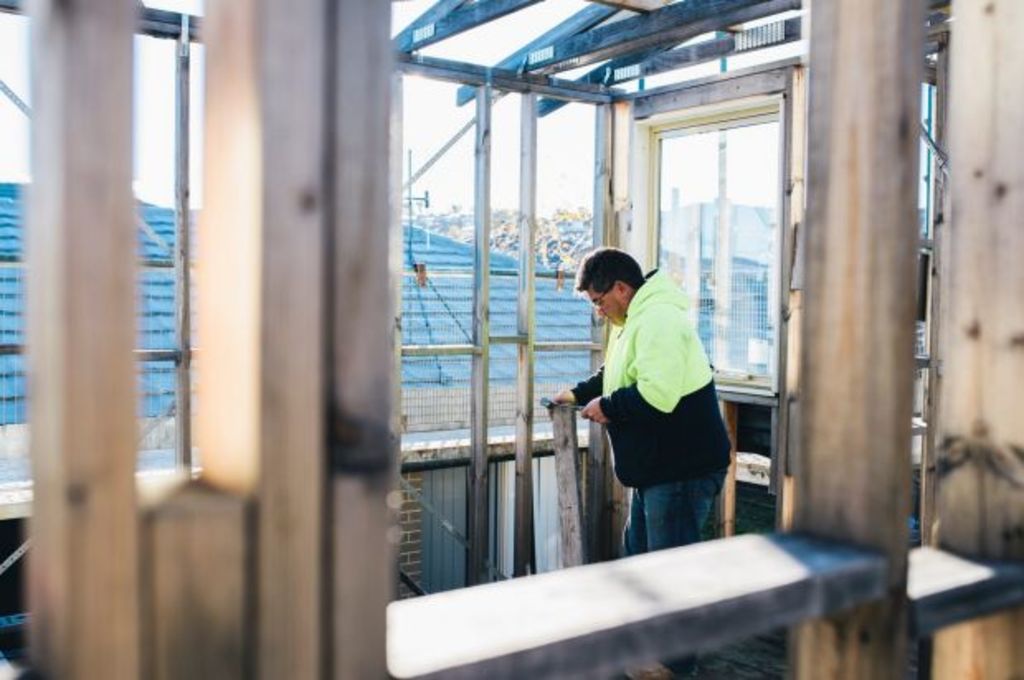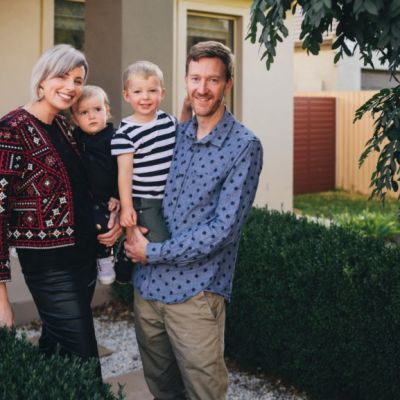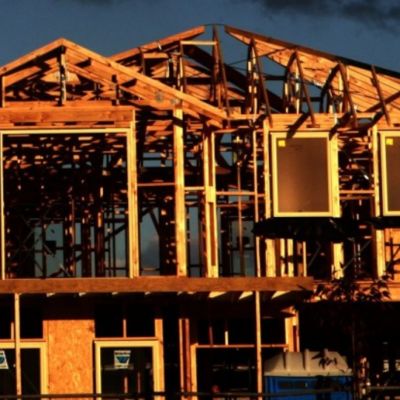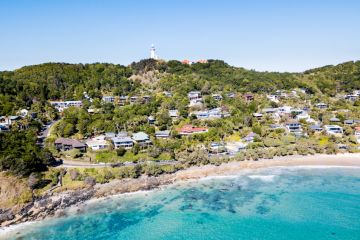Gungahlin region leads Housing Industry Association list of fast-growing suburbs

Gungahlin suburbs dominate a list of Canberra’s fastest-growing communities.
Casey has topped the Housing Industry Association’s Population and Residential Building Hotspots 2017 report, released this week.
The northern Gungahlin suburb’s population grew by 14.8 per cent in the 2015-2016 financial year, with approved residential building valuing $30.2 million.
Crace had a similar level of population growth at 14.1 per cent, plus $24 million worth of residential building work approved.
Franklin rounded out the top three with a 7.8 per cent population jump and residential construction approvals valuing $46.1 million.
The ACT is home to nine of the markets listed as “hotspots” in this year’s report.
To qualify, suburbs had to have recorded a population increase of more than 1.4 per cent in the 2015-2016 year and at least $150 million worth of residential building approved during that period.
Two of Canberra’s top three, Casey and Franklin, are home to new suburb records.
Casey’s residential sales record was smashed by $170,000 with the sale of 12 Bev Lawson Street for $1.3 million earlier this month.
A house at 32 Marie Pitt Street sold for $1,170,000, breaking Franklin’s record in May.
A mix of established and new suburbs rounded out the nine Canberra hotspots: Phillip, Harrison, Ngunnawal, Griffith, Braddon and Greenway.
Greenway had the greatest value of residential building work approved at $73.6 million.
The mix of ACT “hotspots” includes newer communities with continued housing construction, plus more established areas undergoing renewed development.
‘Gungahlin-west’, including Moncrieff, also dropped off the list this year, while Braddon and Greenway were new additions.
/*<![CDATA[*/
/* CK googlemaps v3.6 */
var imgMap = document.getElementById("gmap2017429174245");
var dMap = document.createElement("div");
dMap.id="wgmap2017429174245";
imgMap.parentNode.insertBefore( dMap, imgMap);
dMap.appendChild(imgMap);
dMap.style.width = "100%";
dMap.style.height = imgMap.clientHeight +"px";
imgMap.onload = function(){
var currentDiv = document.getElementById("wgmap2017429174245");
currentDiv.style.height = this.clientHeight +"px";
}
/*generatedType = 3;*/
function CreateGMapgmap2017429174245() {
var dMap = document.getElementById("gmap2017429174245");
if (dMap)
dMap = dMap.parentNode;
else
dMap = document.getElementById("wgmap2017429174245");
if (!dMap) return;
if (dMap.ckemap) {
var map = dMap.ckemap.map, center = map.getCenter();
google.maps.event.trigger(map, "resize");
map.setCenter(center);
return;
}
dMap.onclick = null;
var mapOptions = {
zoom: 10,
center: [-35.29737,149.12697],
mapType: 0,
zoomControl: "Default",
mapsControl: "Default",
heading: 0,
tilt: 0,
overviewMapControlOptions: {opened:true},
pathType: "Default",
googleBar: false
};
var myMap = new CKEMap(dMap, mapOptions);
dMap.ckemap=myMap;
myMap.AddMarkers( [{lat:-35.17470, lon:149.09590, text:"
Caseyn”,color:”homegardenbusiness”, title:”Casey”, maxWidth:200, open:0},
{lat:-35.17528, lon:149.10885, text:”
Ngunnawaln”,color:”homegardenbusiness”, title:”Ngunnawal”, maxWidth:200, open:0},
{lat:-35.19640, lon:149.15382, text:”
Harrisonn”,color:”homegardenbusiness”, title:”Harrison”, maxWidth:200, open:0},
{lat:-35.19885, lon:149.14207, text:”
Franklinn”,color:”homegardenbusiness”, title:”Franklin “, maxWidth:200, open:0},
{lat:-35.20397, lon:149.10696, text:”
Cracen”,color:”homegardenbusiness”, title:”Crace”, maxWidth:200, open:0},
{lat:-35.27106, lon:149.13528, text:”
Braddonn”,color:”homegardenbusiness”, title:”Braddon”, maxWidth:200, open:0},
{lat:-35.32409, lon:149.13692, text:”
Griffithn”,color:”homegardenbusiness”, title:”Griffith”, maxWidth:200, open:0},
{lat:-35.34863, lon:149.09018, text:”
Phillipn”,color:”homegardenbusiness”, title:”Phillip”, maxWidth:200, open:0},
{lat:-35.41763, lon:149.06992, text:”
Greenwayn”,color:”homegardenbusiness”, title:”Greenway”, maxWidth:200, open:0}] );
}
if (!window.googleMaps_Icons) window.googleMaps_Icons = {};
window.googleMaps_Icons[“homegardenbusiness”] = {“marker”:{“image”:”http://maps.gstatic.com/mapfiles/ms2/micons/homegardenbusiness.png”},”shadow”:{“image”:”http://maps.gstatic.com/mapfiles/ms2/micons/homegardenbusiness.shadow.png”}};
if (!window.gmapsLoaders) window.gmapsLoaders = [];
window.gmapsLoaders.push(CreateGMapgmap2017429174245);
window.gmapsAutoload=true;
/*]]>*/
Domain Group chief economist Andrew Wilson said that although the data was somewhat “backward-looking”, the list reflected the strength of the Canberra market, particularly the Gungahlin region.
Dr Wilson said migration was key driver of short-term house price growth.
“There’s no doubt net migration has picked up in Canberra,” he said.
“I think high population and lower construction is the heat generator because it shows demand is greater than supply, which is clearly the case with Gungahlin.”
Dr Wilson said Gungahlin’s notional median house price was $677,000, up almost 9.2 per cent this year to date, according to Domain data.
The notional median unit price is down about 3.9 per cent at $388,550.
“Units are the weaker part of the market in terms of demand – that is still a little weaker in Gungahlin,” Dr Wilson said.
“It’s really a story of demand for housing. Not everyone is looking for a unit there.”
The ACT’s population rose by 1.3 per cent in the 2015-16 year, or more than 5000 people, with 1600 new residents migrating from overseas, according to the Housing Industry Association’s report.
Association senior economist Shane Garrett said 2016 was a record year for residential building across Australia.
“The good news on housing is not confined to the major capital cities – today’s report shows that regional Australia is also peppered with housing hotspots,” he said.
The report also includes a building momentum shortlist, looking at building approvals since mid-2016.
It earmarks the Molonglo Valley’s burgeoning Denman Prospect, plus Barton, Gungahlin, Dickson, Griffith, Moncrieff, Kambah, Belconnen and Greenway, as future hotspots for growth and building approvals.
The seven suburbs have developments slated or underway, from mixed-use precincts to lower-density projects.
Elsewhere in Australia, Pimpama in Queensland topped the national ‘hotspot’ list, followed by Sydney’s Cobbitty-Leppington area and ‘Palmerston – south’ in the Northern Territory.
HIA Population and Residential Building Hotspots 2017 for online
(Based on population growth and the value of approved residential building in the 2015-2016 year)
1. Casey, Gungahlin
Approved residential building: $30,193,000
Population growth: 14.8 per cent
2. Crace, Gungahlin
Approved residential building: $24,034,000
Population growth: 14.1 per cent
3. Franklin, Gungahlin
Approved residential building: $46,055,000
Population growth: 7.8 per cent
4. Phillip, Woden Valley
Approved residential building: $22,000,000
Population growth: 7.1 per cent
5. Harrison, Gungahlin
Approved residential building: $21,178,000
Population growth: 5.8 per cent
6. Ngunnawal, Gungahlin
Approved residential building: $23,740,000
Population growth: 3.5 per cent
7. Griffith, South Canberra
Approved residential building: $28,561,000
Population growth: 2.8 per cent
8. Braddon, North Canberra
Approved residential building: $50,927,000
Population growth: 2.3 per cent
9. Greenway, Tuggeranong
Approved residential building: $73,571,000
We recommend
States
Capital Cities
Capital Cities - Rentals
Popular Areas
Allhomes
More










